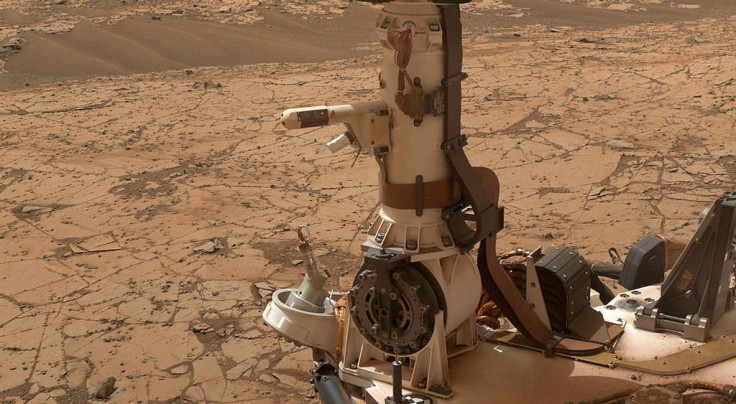NASA Mars Rover Curiosity Detects 'Odd' Pebbles On The Red Planet, Hints Of Alien Life

The NASA Mars Rover Curiosity has been going around the Red Planet in search of new areas for drilling after encountering some technical problems early this month. During one of its excursions, it was able to take a snapshot of some really nice pebbles with some odd yet interesting details.
In a photo released on the NASA website, one can see what looks like normal pebbles from a stream bed. But upon closer inspection and with some enhancement from Kevin M. Gill, a NASA software engineer who does processing of space images, a picture of perfectly round gray pebbles can also be seen.
According to CNET, the pebbles, which are now being studied by the space agency’s rover team, look very similar to rocks found in another area of the planet. These rocks were discovered by the now-deceased NASA rover Opportunity and were labeled as “blueberries.”
The blueberry rocks were discovered by Opportunity back in 2004 and are believed to be rich in hematite. The discovery of the rocks was groundbreaking because NASA said that these pebbles could be "concretions that grew inside water-soaked deposits."
The rocks are believed to be evidence that water does exist on the Red Planet and if correct, then it could be the sign scientists need to prove there could be life on Mars. Curiosity’s new discovery could show that water existed, or could still exist, in other parts of the planet as well. This could raise the chances of finding organic life on the Red Planet.
Aside from the pebbles, NASA also discovered other evidence that water exists on the planet. The space agency recently shared a photo of a mysterious terrain captured by the space agency’s Mars Reconnaissance Orbiter (MRO). The terrain, which ridges look like the folds of a brain, points to the possibility that there’s more ice on Mars than we know of.
The photo was made public by MRO’s HiRise camera team from the University of Arizona and was said to have been captured in December last year. The recent images were explained by the HiRise team as “buried water-ice beneath the surface.”
© Copyright IBTimes 2024. All rights reserved.





















